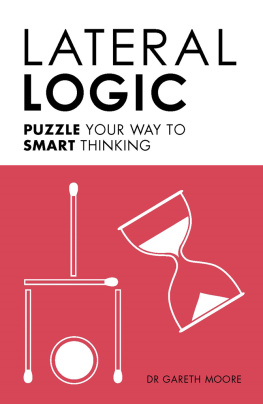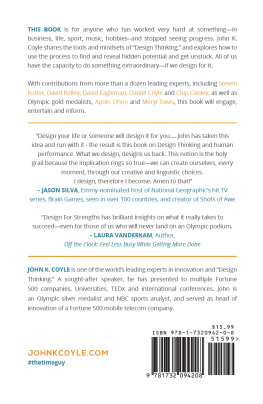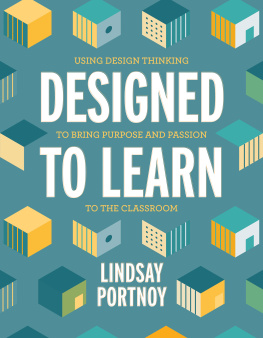Praise for Think Like an Engineer
At last, a book that supports science and engineering undergraduates to learnabout understanding and developing their creative thinking and team skills toaddress the global challenges facing society. Engineers and scientists are often faced with finding and implementing solutions to pressing societal needs. Thisrequires the simultaneous deployment of intellectual, technological and socialskills. This book explores some of the things engineers spend insufficient time considering the process of how to achieve a complex goal by working together.
For example, with the process of product manufacturing, and its associatedcomplex supply chains, becoming a truly global activity a different attitude to education is needed. In the global mind-set paradigm there is still the samefundamental need for intellectual rigor but this needs to be applied within amultidisciplinary team context, perhaps with different cultural values. Linear thinking is unlikely to yield the correct outcomes in a sufficiently competitivetimescale or cost envelope. Think Like and Engineer explores this creativeparadigm.
Professor Mushtak Al-Atabi is well known for his inspirational teaching ofengineering and entrepreneurship in classrooms and on-line. This book, written for undergraduate students, shares some of his thinking and passion. The text is illustrated with practical examples. The first few chapters allow students to see how the engineering brain needs to be wired including developing an emotionalintelligence in thought and action. In this context it introduces the processes ofcreating concepts to address engineering challenges, designing solutions andthen implementing and operating the solution. This approach has become wellknown under the acronym CDIO in recent years. For me, a most important partof the book was the chapter discussing the dynamics in taking risks as an individual and as a team. In my experience this topic is rarely addressed and yetis so critical to understanding how more creative inventions can be turned into radical innovations. The book shows how engineering design groups can beassessed for their approach to risk-taking.
In summary an enjoyable and essential read for student scientists, engineers, andeducators who want to impact society by thinking how they can develop asystematic approach to solving challenges.
Prof. Richard A Williams, Pro-Vice Chancellor, University of BirminghamThe word engineer has the same roots as the word ingenious (Latin ingenium). Engineers are therefore charged with finding ingenious solutions to mankinds problems. This book describes how to think like an engineer usingcreative formal and informal approaches - and how to arrive at optimal solutions using the Conceive, Design, Implement, Operate (CDIO) process. It will be auseful text for undergraduate engineers wanting to design even more ingenioussolutions!
Prof. John Fothergill, Pro Vice-Chancellor, City University LondonThis book is a real tour de force. Prof Al-Atabi approaches his topic Think likean engineer from the very foundations of how our human brain operates, and interacts with our senses, how we build models of our world and use these models to guide us to realise (and when necessary limit) our dreams.
Dream Big. Be Different. Have Fun. is a very appropriate chosen by-line for the book. Indeed the book itself is an example of how one can live this experience.Reading the book, one feels certain that Prof Al-Atabi was doing just thatdreaming big, being different and having fun.
For everyone who wants to be an engineer, this book will be a great guide to unleash their creativity after all, that is the true meaning of the Latin ingenerare(to create) from which the English word engineer is derived. Have fun reading!
Prof. Iven Mareels, Dean, Melbourne School of EngineeringThis book articulates that the thought process of an engineer is not just aboutspecific technical accomplishments, but about acquiring the skills to handle the evolution of emotions, goals, and the environment in a dynamic world. It broadens the scope of engineering practice as a principle, not merely a profession.A must read for citizens in this technological world!
Prof. Ben Koo, Tsinghua University, Beijing, ChinaAs an experienced academic who leads first year engineers and complexresearch teams across academia and industry, this book resonates closely with many of my teaching and learning experience. The engineering CDIO (ConceiveDesign-Implement-Operate) process is cleverly interlaced with relevant and innovative concepts in brain function biochemistry, positive thinking, emotionalintelligence, brainstorming, project management, and entrepreneurship. This creates a much more holistic view of engineering thinking, and will influence future course designs in my University
Prof. Pete Halley, Head of School of Chem. Eng., University of QueenslandProject-based learning is essential and valuable to engineers and engineeringstudents who are expected to apply scientific knowledge, mathematics, andingenuity to resolve technical, societal, and commercial problems in order to benefit the human beings in this century. Its core elements are all addressed in the book Think Like an Engineer.
Dr. Yuei-An Liou, Distinguished Professor, National Central University, Taiwan"Think Like an Engineer moves well beyond the stereotypical view of Engineersas mathematical thinkers, Al-Atabi highlights the importance of communication,emotional intelligence and empathy in solving problems for society. Illustratinghis points with appropriate examples, the reader is taken through a multidimensional perspective on the mindset of a successful Engineer. What standsout is how accessible the concepts are - this book is easy to read and the key pointsare easy to grasp, but nonetheless the technical depth is preserved. An outstanding introduction to the Engineering profession, and one that is useful notjust for potential engineers but to society at large."
Prof. Euan Lindsay, Foundation Professor of Engineering, Charles Sturt UniversityEngineers are entrusted with helping all of us face the Grand Challenges of the21st Century. To achieve this, they need to think systematically and innovativelywhile searching for ground-breaking solutions. Think Like an Engineer presentsthe CDIO framework of practice in an easy to read, down to earth manner thatmakes it accessible not only to engineers, but to the wide public as well. The book also provides a holistic personal and professional development programme as it incorporates the latest in brain science, emotional intelligence and entrepreneurship. It is a must read for engineers, business leaders and educatorsin general.
Prof. Seeram Ramakrishna, Founder of Global Engineering Deans Council, and a Worlds Most Influential Scientific MindsMushtak has tackled a subject close to my heart; he has explored what makes anengineer tick; the way in which engineers tackle real world and often global challenges; the deep down passion that keeps engineers motivated; and looks into the heart-ware needed for an eternally evolving discipline that is developingsolutions for a sustainable future.
Joe Eades, Founder, Ispahan GroupAn invaluable book for both engineering students and those teaching them. It provides both an overarching conceptual rational for learning engineering andrelated STEM disciplines and practical frameworks to shape student understanding of their discipline.
Alan Jenkins, Professor Emeritus, Oxford Brookes UniversityThis lively engineering education book by Mushtak Al-Atabi is filled with easyto relate examples and a systematic treatise to support and enhance the effectiveness of the process.
Dr. Shuo-Yan Chou, Distinguished Professor, National Taiwan University of Science and Technology




